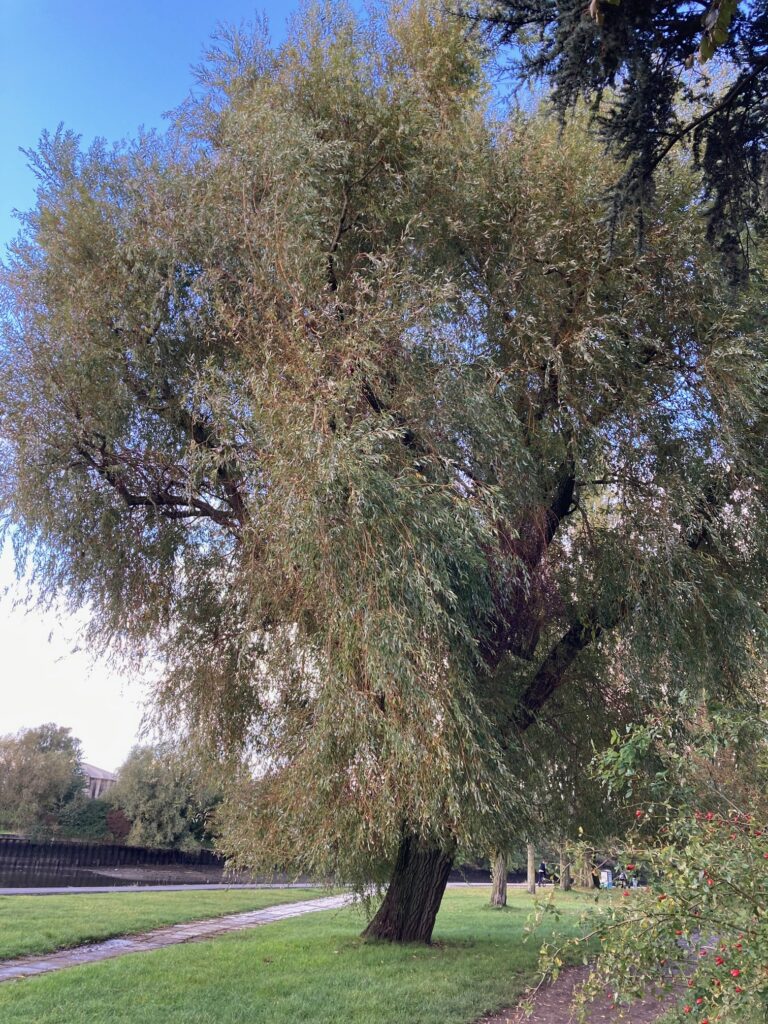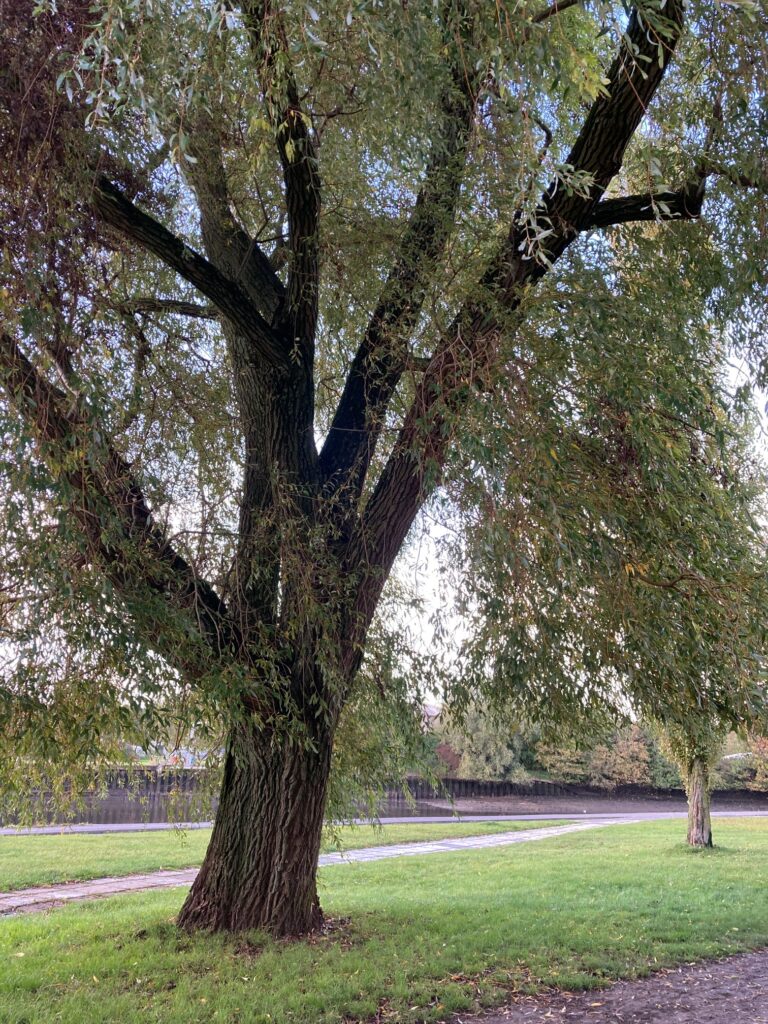What3Words reference: thanks.wells.rare
Location notes: near Chetwynd, no1 River View Road (off Manor farm Road)
Information courtesy of Kew Gardens website.
The weeping willow is native to China, Mongolia and Korea but is commonly found in the UK having been introduced first in the 18th century. It is a deciduous tree, the height of which can reach 15m and the trunk appear twisted. It grows rapidly in both wet and dry conditions and is easily propogated from cuttings but the life is relatively short – 50 to 75 years. The tree in Riverside Park shows the typical deep fissured silvery brown bark. Leaves are long and narrow with a pointed tip, (see detail photo) and are held on long yellow-green stems dangling from the crown.
The flowers, which appear in spring, grow as yellow catkins and are pollen rich and provide a good source of food for bees and butterflies. Male and female trees both produce catkins but on separate trees.
The bark contains a compound of salicin similar to aspirin and so used to be used for pain relief.
The name Babylonica was given by Carl Linnaeus in 1736, when he was developing the first scientific plant categorisation, based on the bible – willow-like poplar trees growing by the rivers of Babylon. In Chinese Buddhism the willow is associated with compassion and mercy.




